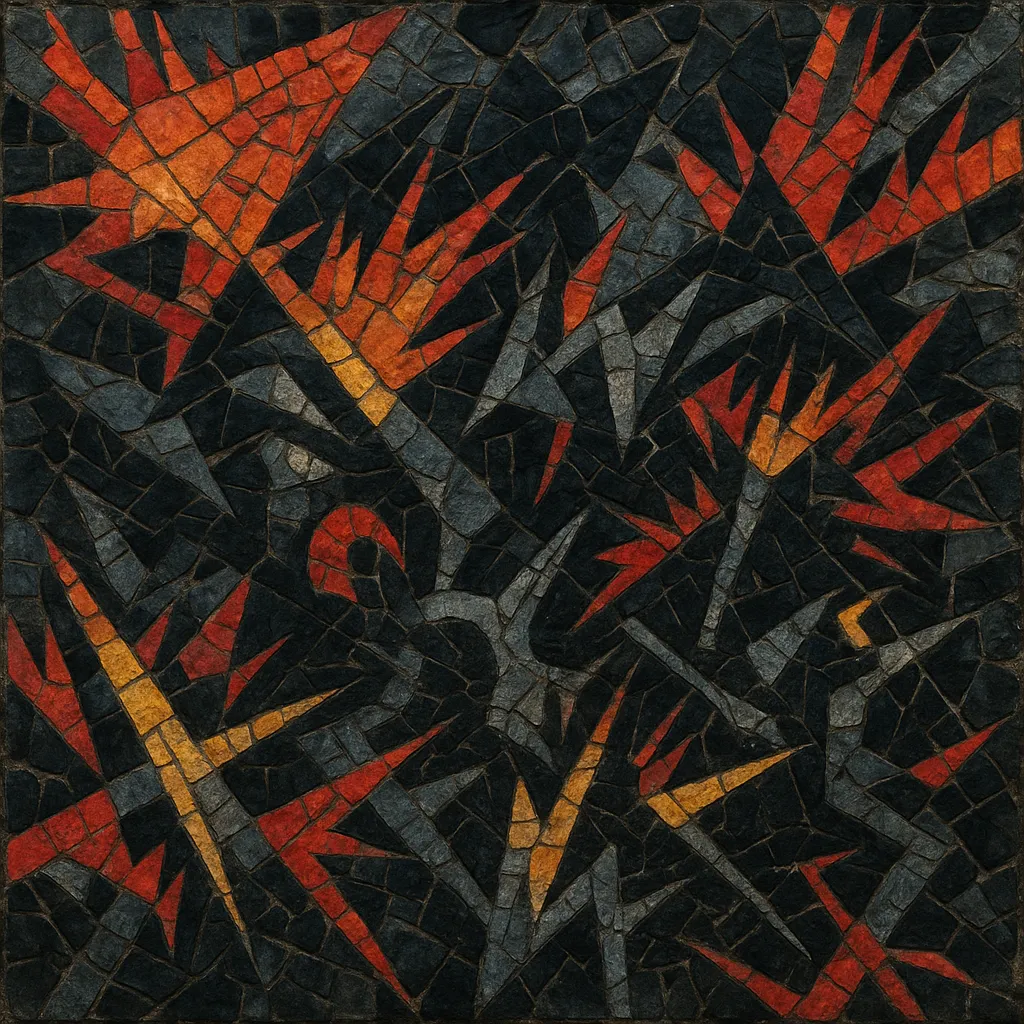
Brutal prog (short for "brutal progressive") is a hyper-aggressive, tightly wound offshoot of progressive rock that fuses the complexity of prog with the abrasion of no wave, the intensity of grindcore, and the freedom of avant-jazz.
Its hallmarks include relentless rhythmic churn, sudden metric lurches, whiplash stop–start arrangements, and dense, through-composed structures that minimize repetition. Harmony tends toward dissonance and chromatic clusters, while melodies often appear as angular, high-velocity unisons and hocketed lines between guitar, bass, and drums (and at times saxophone or keys). Vocals, if present at all, are sparse and used for color rather than hooks.
The overall effect is maximalist, precise, and confrontational: music that feels meticulously engineered yet volatile, demanding virtuosic control and ensemble cohesion.
Brutal prog coalesced in the United States underground as players steeped in progressive rock began absorbing the ferocity of hardcore punk, the dissonance of no wave, and the formal rigor of contemporary classical and free jazz. The Chicago scene around The Flying Luttenbachers (led by Weasel Walter) became an early flashpoint, while Japan’s speed-fueled zeuhl offshoots (e.g., Ruins, later Koenjihyakkei) provided a parallel template for extreme, through-composed complexity.
In the early 2000s the term “brutal prog” was popularized within artist circles and DIY press to distinguish this sound from both traditional prog and math rock. Bands such as Upsilon Acrux, Orthrelm, Yowie, and Ahleuchatistas pushed the language toward higher tempos, tighter unisons, and more radical metric design, often releasing via small experimental labels and touring the U.S. club/warehouse circuit.
Through the 2010s, brutal prog aesthetics permeated adjacent scenes—avant-prog, experimental rock, and noise—while remaining a niche but influential practice. Ensembles refined production (clear, dry mixes that preserve micro-detail) and performance (metronomic precision at extreme subdivisions). Though still largely underground, the style’s methods—dissonant unisons, non-repeating forms, and blast-level rhythmic density—continue to inform adventurous rock and improvised music on both sides of the Pacific.

